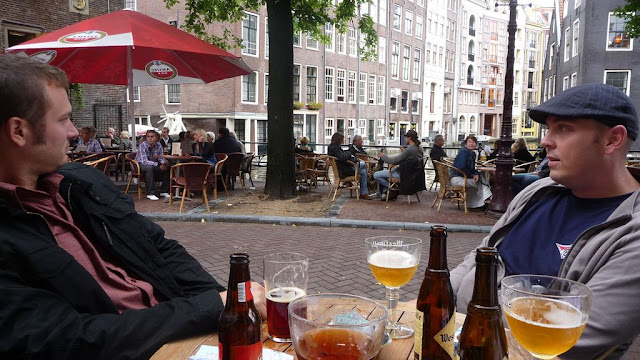
When a volcano in Iceland erupted this spring many flights in Europe were cancelled. The ash cloud never reached Sicily, but Irish air space was closed in the days leading up to our planned trip to Ireland. This time luck was on our side and we were able to make our trip a little more than 24 hours after the flight ban was lifted.

We arrived in Dublin on a foggy and rainy day. We checked into our hotel in the city near Stephens Green and headed over to the St. James’s Gate Brewery. Arthur Guinness acquired 64 acres in Dublin city in a lease that lasts 9000 years at £45 per year. On his land he built a brewery and St. James’s Gate has been the world headquarters of Guinness beer since 1759. Today you can tour the old brewery and enjoy the exhibits that tell the history of Guinness and explain some of the brewing processes used over the years. At the end of the tour there is a roof top bar where you are given a complimentary glass of Guinness.

Next we toured St. Patrick’s Cathedral which is the National Cathedral for the Ireland and also the largest church on the island. The church was built in 1192 and placed on the spot where Saint Patrick baptized converts from paganism to Christianity.
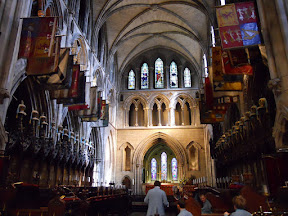
From there we headed over to Dublin castle and took a tour. The castle was built by the English for defense of the city and to protect the King’s treasury. The castle was completed in 1230 and remained the seat of British rule in Ireland until 1922 when Ireland became a Free State. Today the castle is used for government offices and ceremonies. Like many castles, our tour took us to royal apartments, ball rooms, banquet halls and a throne room.

After dinner Shannon and I took a guided tour of Dublin that focused on the rich literary history of the city. It was also a pub crawl. The tour was lead by professional actors who take visitors to pubs of literary significance, perhaps a frequent stop for a poet, or the setting for a scene in a novel. At each stop the guides perform a scene or song from the work of a Dublin artist. It was less lame than it sounds.
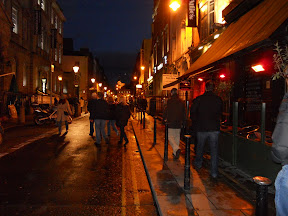
Itching to see some of the Irish countryside, the next day we ventured out to the Wicklow Mountains. We were able to do a little bit of a hike along a river that leads to Glendalough, a medieval monastic settlement founded in the 6th century. At Glendalough there are churches and ruins of churches along with a Celtic graveyard.
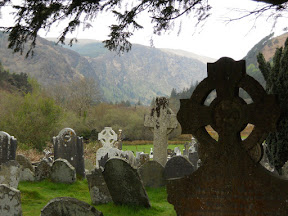
From Glendalough we headed to Brownshill Dolmen. Brownshill Dolmen is a bit of a mystery, it is a tomb built of large granite rocks in the middle of a farmer’s field. The tomb was built between 4000 and 3000 BC and the roof of the tomb is a slab that weighs 110 tons. Shannon claims to have solved the mystery of how they built it.
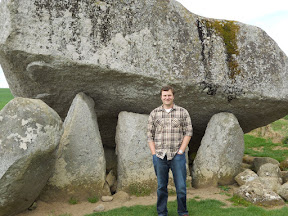
For lunch we headed to the city of Kilkenny. Kilkenny was built in the middle ages and today is a very enjoyable town to spend an afternoon in. We did visit the major sites of Kilkenny Castle and St. Canice’s Cathedral but mostly we just enjoyed walking through its streets and taking in the city’s charms.

The next day we toured Trinity College which, founded in 1592, is the oldest college in Ireland. The campus itself was nice and was a point of interest along our literary pub crawl a couple of nights earlier. Today our aim was to visit the famous Trinity College Library. The Library is the largest in Ireland with around 5 million volumes and is also entitled to receive a copy of all works published in the Republic of Ireland and the United Kingdom. However the coolest part of the library is Long Room and the Book of Kells. The Long Room is lined with shelves containing 200,000 of the library's oldest books and manuscripts, along with busts of scholars, a 14th-century harp and an original copy of the Proclamation of the Irish Republic.

The book of Kells is the prize possession of the library. The Book was made by Celtic monks around 800 AD and is an illuminated manuscript in Latin, containing the four Gospels of the New Testament. The exhibition for the book is great. Because the book is illuminated each page is a piece of art and they have individual pages framed on the walls like an art museum would hang canvases. Along with opportunities to view the pages there are exhibitions about the making of the book and its history. The library at Trinity College was a highlight of the trip.
From Trinity College we headed to the less high-minded museum at the Jameson whiskey distillery. Still one of the most recognizable whiskies, at one point Jameson was the largest distillery in the world. We took a museum tour that walked us through the history of Jameson and the distillery process.
So our tour of Ireland began at a brewery and ended at a distillery. But in between we saw castles, libraries, churches and sheep. We had a great time enjoying the many sides of Ireland.

 As if Shannon and I require an excuse to travel, for our 2nd anniversary we decided to go to Paris. We had each been there before on separate trips so we repeated some experiences and tried to mix in some new ones.
As if Shannon and I require an excuse to travel, for our 2nd anniversary we decided to go to Paris. We had each been there before on separate trips so we repeated some experiences and tried to mix in some new ones.  If you can believe it when Shannon was in Paris before the Louvre was closed so we made a visit to that museum a priority. Obviously it is one of the greatest museums in the world and I like it because it has awesome art and history collections from around the world.
If you can believe it when Shannon was in Paris before the Louvre was closed so we made a visit to that museum a priority. Obviously it is one of the greatest museums in the world and I like it because it has awesome art and history collections from around the world. We also made a point to make it to Versailles where we toured the palace and enjoyed the temporary Japanese exhibit and the gardens outside.
We also made a point to make it to Versailles where we toured the palace and enjoyed the temporary Japanese exhibit and the gardens outside. 






